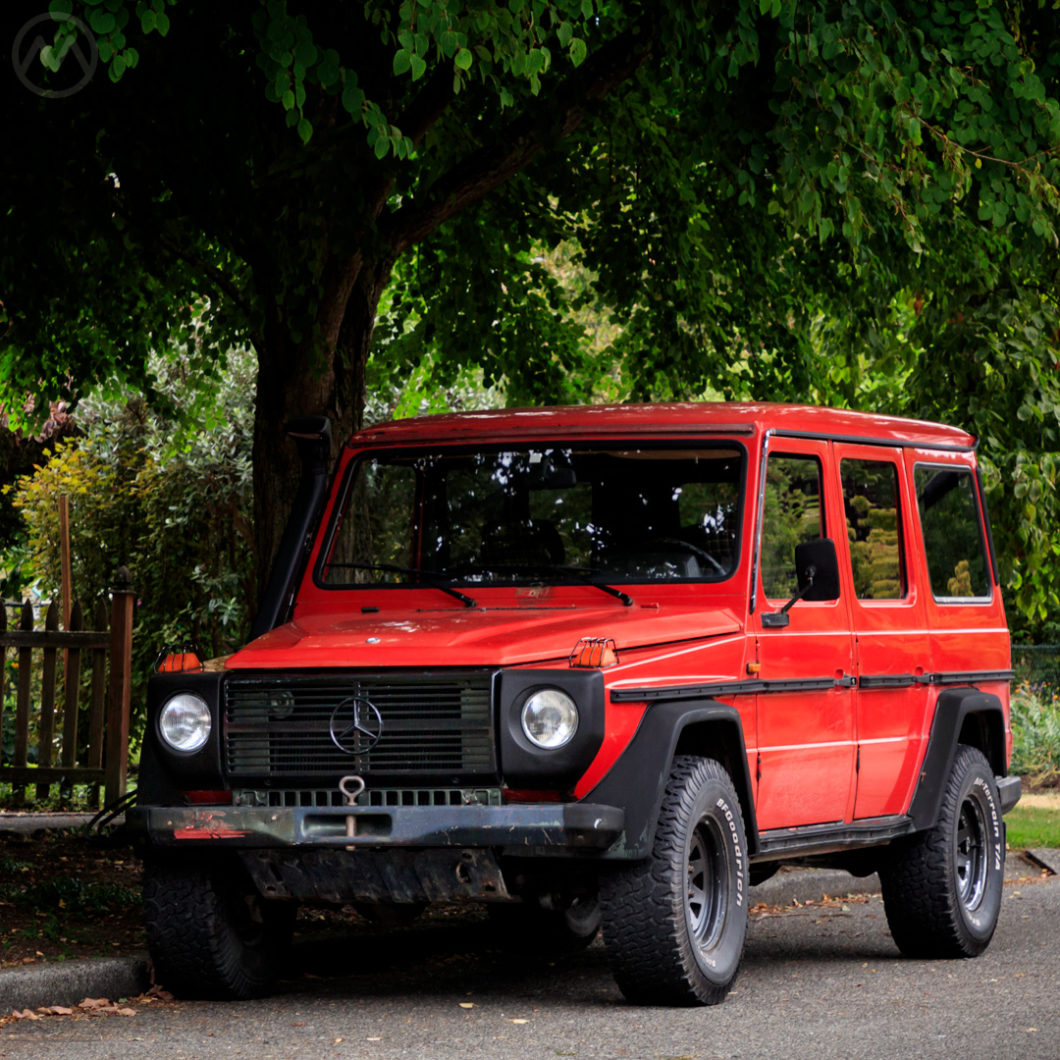Nobody would have predicted that the military surplus Mercedes Geländewagen would end up a coveted luxury item, but that’s what it’s best known as today. This particularly true in the USA, where the truck’s best-ever sales year was 2017.
But unlike the ones you see in Rodeo drive now, the early Gs were primarily about function rather than luxury, and the original series 460 G-wagens like this one were much not too far removed from military hardware. That was, of course, the G’s original purpose.
The Power Player
The story begins with Shah Mohammed Reza Pahlavi of Iran, a major shareholder in Daimler-Benz who actively wanted more of the company. In 1975, German banks and business interests blocked his attempt to purchase a 25% stake in Daimler. He’d bought 25% of Krupp steel in 1974, and effectively bought out the original British ownership of Deutsche Babcock and Wilcox, A.G., a manufacturer of power generating equipment, that spring.
But before that, when he was only a minor investor, he’d requested Daimler develop a military vehicle for Iran. Work had begun work on what became the G-wagen in 1973 as a result. The truck would have a civilian version designed for off-road duty but was primarily about being a military vehicle. Mercedes-Benz would develop it, and it would be built in a new factory at Steyr-Daimler-Puch in Graz, Austria.
However, thwarted from buying the company, the Shah ordered for 20,000 of the trucks in mid-1975, giving Mercedes-Benz 20,000 reasons to do what he wanted. By the time the G was ready, of course, he’d been deposed and Iran’s new government had cancelled the order. But the truck itself was a tour de force.
Making the G-wagen
Everything about the G-wagen was over-engineered. It used three locking diffs, hugely oversized bushings, a rock tough frame and simple construction, and was built to very high standards. It was tested from the Sahara to the Arctic and designed to go anywhere and do anything.
With Iran cancelling the order, the first military customer was Argentina; but soon militaries all over the world were using them (and still are). There was also a licensed version for the French military (the Peugeot P4), and a military version built in Greece (series 462). It was a common cold-war era favorite that lasted as a popular military choice for decades.
Civilian Gs went on sale in mid-1979. The 460-series came first, and while very basic inside and out, it did everything the military version could do. Power came from engines typically found in the W123 at first, from a 2L four through a 2.8L M110 six, and a set of similar diesels up to the 300GD’s I-5.
Inside they were mostly cloth and plastic, with few amenities, particularly compared with the later Gs. For the first decade, the truck hued closely to its original mission and around 50,000 were sold – they didn’t come cheap despite being humble inside. Gradually it found an audience with well-heeled folks who liked the ruggedness and capabilities, just as on the Range Rover and Jeep Wagoneer.
Checkpoint Charlie to Rodeo Drive
With growing interest in the G as a luxury civilian truck, the two product lines grew further apart in 1990 with the much more upscale, V8-optional 463-series taking over Civilian duties.
Mercedes-Benz USA had no intention of offering the G-wagen in the USA, but a few very expensive grey-market trucks trickled in during the 80s. At that time, grey-market G’s in the U.S. could fetch over $100K, numbers that made it feasible (along with federalized versions of the engines used) to keep bringing them in even after the “25 year rule” was enacted.
These were lucrative imports, and eventually Mercedes-Benz USA decided to get in on the action – the U.S. version arrived – with every conceivable bell and whistle – in 2002. After the 460-series turned 25 in 2004, quite a few of the early 460-series trucks like this one were imported as classics.

